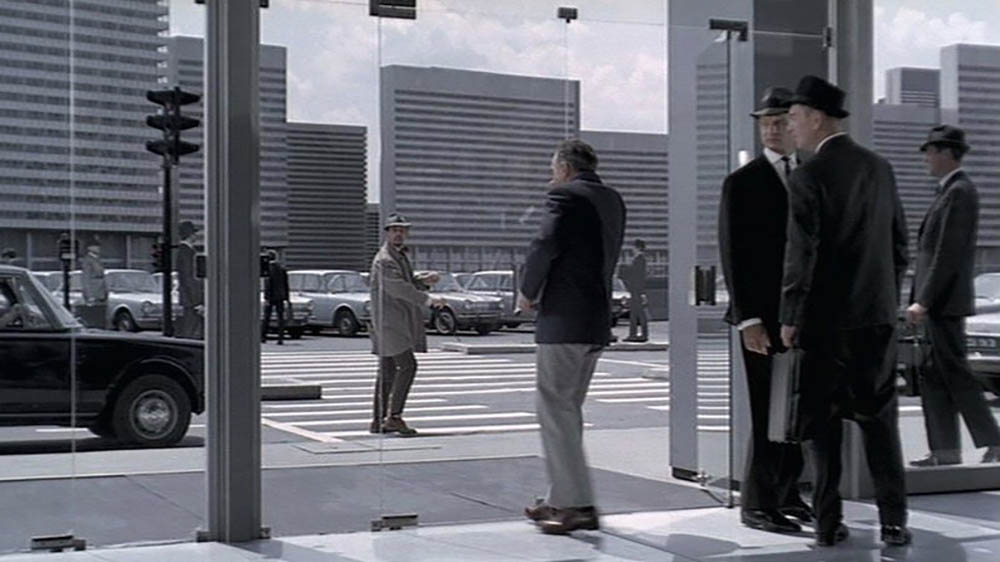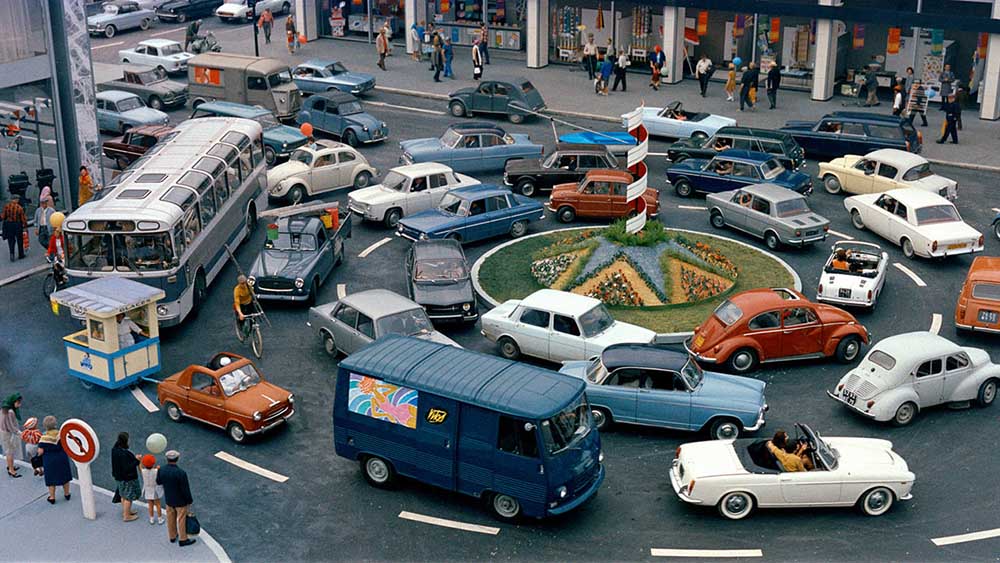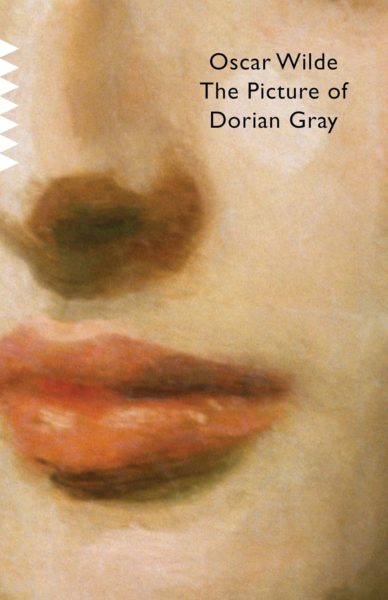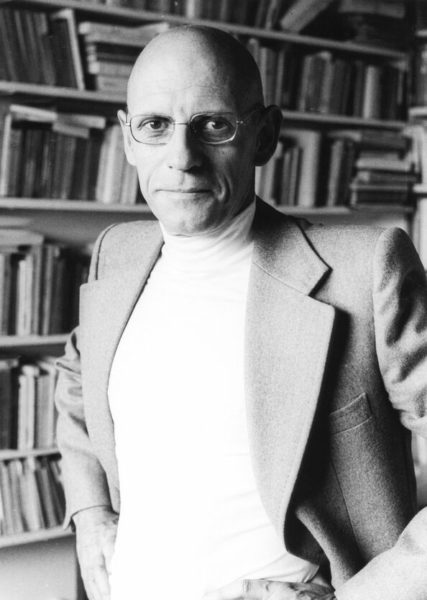On the outskirts of Paris, an upright city, an airport concourse, American tourists, Monsieur Hulot, a missed appointment, endless back and forths, a lift, a Household Arts Show, misunderstandings, reflections, open-space offices, an American girl, preparations for the Royal Garden restaurant opening night, cocktail jackets and dinner jackets, dancing all night, mornings at the drugstore across the street, an anonymous sprig of lily of the valley, cars and buses, like a final ballet.
Brutalist aesthetics of concrete and glass
Playtime, released in 1967, is Jacques Tati’s fourth feature film. The director plays with lines and surfaces. Shades of bluish grey where steel, glass and concrete structures are mixed.
Jacques Tati uses wide and long shots to enlarge space and distend time. In these vast shots where dozens of characters and details swarm, the eye wanders, searches and chooses. The shots duration also gives time to see, apprehend and think. This is the opposite of the contemporary habit of jerky editing which, under the pretext of dynamism, transforms the spectator into a consumer of the show, only responding to stimuli.
Standardized world of gray suits
Skyscrapers modern architecture, airport halls and offices resonates with the characters’ suits rigour. The world is standardised: the large concrete bars are the counterpart of the grey flannel(English flannel, from Welsh gwlanen, wool) - fabric whipped More three-button suits worn by the workers. They come to the office holding the same black briefcase, wearing the same perfectly polished black leather shoes. In this consumer society, people have also become products.
Monsieur Hulot, a key character in Jacques Tati’s universe, stands out from the mass of grey suits. On the fringes of a world that has become global, the man evolves in his taupe suit, velvetcotton fabric with a complex weave, it is composed of a simp More calf shoes, tweedwoolen fabric, more or less rustic, woven with multicolored More overcoat with a gun-club motif that belong to a bygone era. The individual against the mass.

TATI, Jacques, réal. Playtime set. 1967.

TATI, Jacques, dir. Playtime. 1967. 135min.

TATI, Jacques, dir. Playtime. 1967. 135min.

TATI, Jacques, dir. Playtime. 1967. 135min.

TATI, Jacques, dir. Playtime. 1967. 135min.

TATI, Jacques, dir. Playtime. 1967. 135min.

TATI, Jacques, dir. Playtime. 1967. 135min.
- BRUMMELL« the most sober, the most strict, the least extravagant man »
- THE GRAPHIC T-SHIRT« from a history that does not follow fashion but the needs for expression to being a part of collective conscious and an underground culture »
- FOUCAULT / TURTLENECK« though the black turtleneck was serving as a symbol of irreverence and rebellion in 1950s, Foucault’s rebellious spirit manifested in choosing a cream-coloured version »
- SILK



